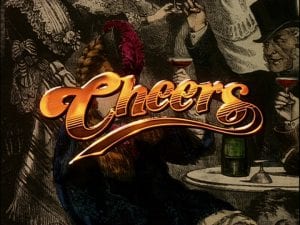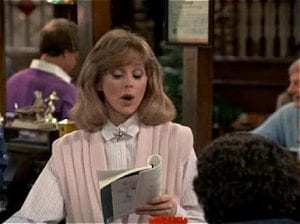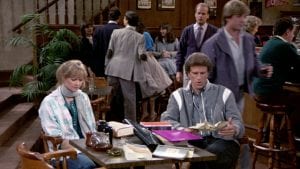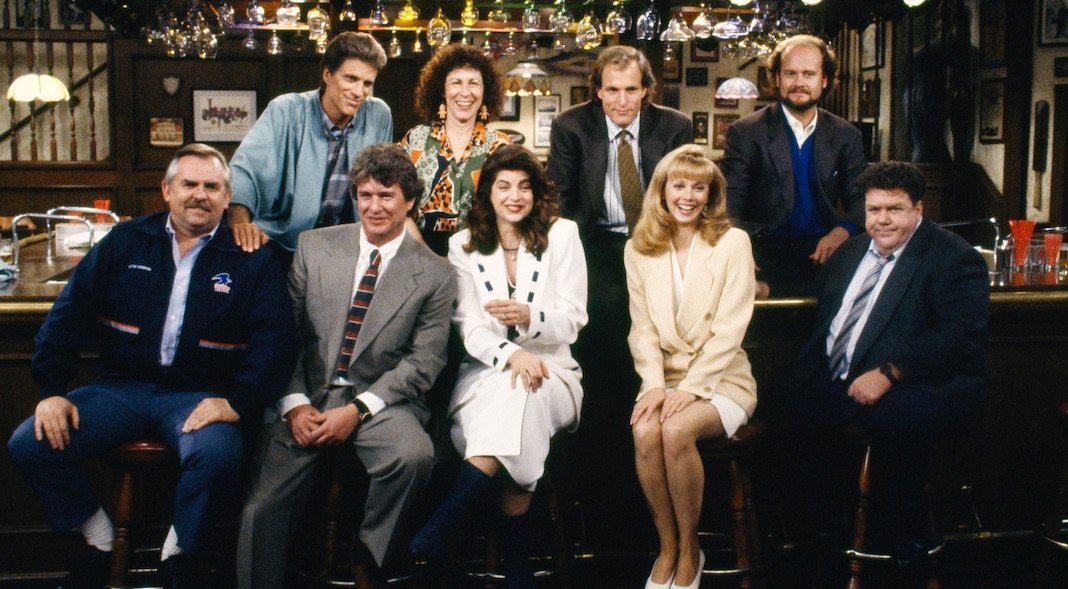Plagiarism in Pop Culture: Cheers
Not everybody knows your poem...

Cheers is, without a doubt, one of the best-known and best-loved sitcoms of all time.
Running from 1982 to 1993, the series made it 11 seasons and 270 episodes. However, even after its cancellation, the show lived on in the form of its popular spinoff, Fraiser, which went on for another 11 seasons and some 264 episodes.
Set in Boston, Massachusetts, the show focuses on the trials and challenges of the regulars at a bar named, appropriately, Cheers. At the center of the show is Sam Malone, a former baseball player and recovering alcoholic who owns the bar. Sam is flanked by a menagerie of eccentric employees and customers that managed to get into a variety of weird situations.
Other characters include Carla Tortelli, a cynical cocktail waitress at the bar, bar regular Norm Peterson, postal worker Cliff Clavin and Woody Boyd, a dunce of a bartender.
However, it would be Sam’s off again, on again relationship with waitress and aspiring writer Diane Chambers that would bring plagiarism to the bar where everybody knows your name.
While it might seem like an odd topic for a TV show about a bar, that’s exactly what happened in episode 10 of season 5 of the series. The episode, entitled Everyone Imitates Art, actually ended up being one of the most interesting and unique looks at plagiarism on TV.
The Plot

The episode begins with Diane feeling upbeat with a letter she received from a poetry magazine she had submitted her work to. Though it was a rejection letter, Diana said that it was so polite and encouraging, it meant that they were practically begging her to submit more work.
Sam, however, says that the letter is just a form and claims that he could submit a poem and get a similar letter just as easily. Diane accepts the challenge and tells Sam to write something and send it in.
Three weeks later, Diane confronts Sam wondering where his rejection letter is. Sam says he hasn’t gotten one but shows her the latest edition of the publication. In it is a poem published under Sam’s name.
In shock, Diane almost immediately assumes that Sam plagiarized the work and makes it her mission to prove it. She spends the next week riffling through books and magazines trying to find where Sam copied from.
But after a week of living off coffee and cigarettes, Sam takes pity on Diane and pulls her into his office. There, he explains to her that he did copy the poem but not from a published source. Rather, he copied it from one of her old love letters to him (one she had clearly forgotten about).
This causes a strange series of emotions in Diane, including being happy that something she wrote was published, even if not under her name, and kissing Sam, saying that it’s sweet he kept her old love letters.
To Diane, this is a sign that Same really does love her despite his protests to the contrary and the episode ends with Sam arguing that he keeps a lot of things that have no meaning to him, even as Diane continues to brush his claims aside.
Understanding the Plagiarism

The plagiarism in this story is fairly straightforward. Sam, unable to create a poem of his own, submitted one of Diane’s under his name.
The plagiarism here is a bit confusing. If Sam’s goal really was to prove that any piece of garbage poem could receive the same rejection letter, then it doesn’t make sense to submit a good one. He could have simply written a piece akin to the one featured on Leave it to Beaver and made his point much more effectively.
However, it’s not the plagiarism that’s really interesting in this episode, it’s Diane’s reaction. Once she’s convinced of Sam’s plagiarism (and, to be fair, she wasn’t wrong), she goes on a week-long hunt to find the original source.
This episode aired in 1986, this was nearly a decade before the Internet would be widely available and 14 years before the launch of Turnitin.
This, in short, is what plagiarism detection looked like before the Internet.
While obviously the episode took some liberties for the sake of comedy, it did hit upon the challenges of trying to find the source of a suspicious work. Diane was wading through a sea of books, trying to nail down the era the original poem was written in and narrow down her hunt in any way possible.
Before digital searches, that was a lot of the process. This is one of the reasons why, before the Internet, plagiarists were largely caught by accident, with one person knowing both works. Even experts in a field would struggle to find a source in the sea of published works.
Still, it’s a bit frustrating that the plagiarism didn’t have a solid conclusion. Once he admitted to the copying, Sam made no efforts to make things right. He neither agreed to tell others at the bar about his misdeed or correct the matter with the magazine.
Diane, too caught up in Sam’s supposed feelings for her, lets the actual plagiarism drop completely. Instead, she chooses to focus on the fact something she wrote was published, even if it wasn’t under her name.
Bottom Line
It’s not often we get a look into what it was like to try and detect or prove plagiarism before the Internet. It’s really amazing to think how technology has changed this issue forever.
However, one thing that hasn’t changed is the emotional impact plagiarism can have. In this episode, the plagiarism nearly drives Diane to a mental breakdown.
Not only does her obsession with spotting the plagiarism push her to live a week of coffee and cigarettes, but the defeatist feeling of trying so hard while Sam succeeds with ease causes her to stop writing and feel like an abject failure.
While this is certainly an exaggeration, it shows the harm that can come from plagiarism. When plagiarists take the limelight away from legitimate creators working hard and producing new material, it just causes many potentially great artists to give up.
Diane’s emotional struggles may have been exaggerations, but many artists and writers can find a reflection of themselves in it, making this episode even more poignant.
So, while the episode itself may not have had an interesting plagiarism case or a good conclusion to it, it was still a relevant and unique look at the aftermath of plagiarism, especially at the way it was dealt with before the Internet.
More Plagiarism in Pop Culture (In Reverse Order)
Want more Plagiarism in Pop Culture? There Are 40 others to check out!
- Ferris Bueller
- Randy Feltface
- Bob’s Burgers
- Columbo (Part 2)
- Columbo (Part 1)
- Death in Paradise (Part 2)
- American Auto
- Saturday Night Live
- The Conners
- Death in Paradise (Part 1)
- Lobachevsky
- Back to School
- The Golden Girls
- Young Sheldon
- The Goldbergs (Part 2)
- King of the Hill (Part 2)
- Yesterday
- King of the Hill (Part 1)
- The Kids Are Alright
- Big Fat Liar
- Coco
- Re-Animator
- Elementary
- Instinct
- Fresh Off the Boat
- The Goldbergs (Part 1)
- Lou Grant
- Star Trek: The Original Series
- Arthur
- Criminal Minds
- Mystery Science Theater 3000
- Cheers
- WKRP in Cincinnati
- Boy Meets World
- Law & Order: Criminal Intent (Part 2)
- Law & Order: Criminal Intent (Part 1)
- Jane the Virgin
- The Waltons
- Leave it to Beaver
- The Facts of Life
Want to Reuse or Republish this Content?
If you want to feature this article in your site, classroom or elsewhere, just let us know! We usually grant permission within 24 hours.
